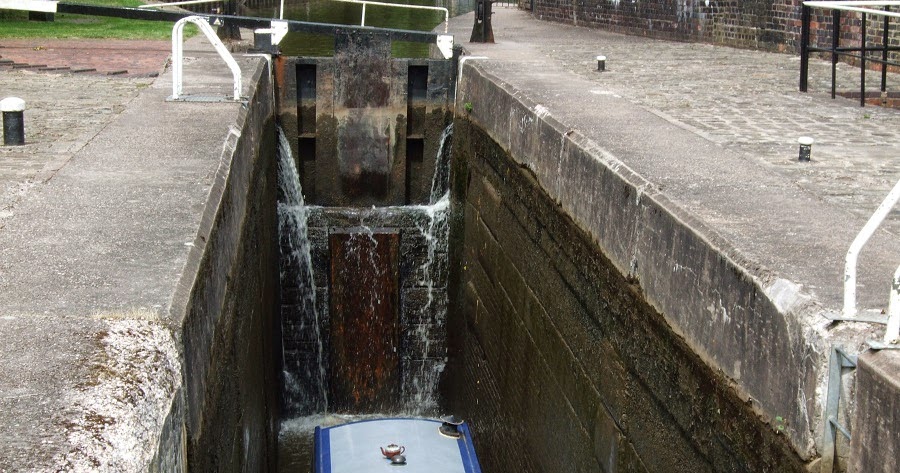
The builders of this kingdom, the Archineers, studied source in an attempt to better understand its properties. The game is set in a kingdom, built using a mysterious substance known as Source. Once the Build phase ends, the Battle phase begins. During the Build phase, the player has a limited amount of time and resources to construct defenses, which consist of walls, towers, cannons, machines, and traps. Combat is divided into two phases, Build and Battle. The battlefield, viewed from an isometric perspective, is displayed on the DS's bottom screen. Lock's Quest is a real-time strategy game, incorporating tower defense gameplay elements.
#Lock queue olmsted Pc#
and on 16 February 2017, THQ Nordic officially announced that they were developing a remaster for Lock's Quest scheduled for May 2017 for PlayStation 4, Xbox One and PC with development by Digital Continue. On January 6, 2017, the German game ratings board Unterhaltungssoftware Selbstkontrolle (USK) rated Lock's Quest for PlayStation 4, Xbox One, and PC which indicated that the publisher was developing a port for the game.

It was released in North America on September 8, 2008, in Europe on Septemand in Australia on September 25, 2008. It is 5th Cell's second Nintendo DS game. The lessons learned from accidents are shared with USACE and the Coast Guard to prevent future incidents and provide industry with additional information in times of poor visibility to assist in safe navigation.Lock's Quest is a real-time strategy tower defense video game developed by 5th Cell and published by THQ. “Additionally, the playback mode can be used to track a vessel’s movement to help us see what course was taking place prior to an accident or near miss,” said Ohlemacher. “The bottom line is, we as lock operators can aid in the movement of vessels to help keep the delay times down,” said Ohlemacher. Estimated time of arrival is automatically calculated for vessels and used to help track times and movements. “This (system) enables us to pass traffic through this area and reduce delays,” said Ohlemacher. Today, the lock operators rely on LOMA to track boats, orchestrate the successful movement of commercial traffic through otherwise congested areas, and investigate accidents. Scott Ohlemacher, head lock operator for Olmsted Lock and Dam and Lock and Dam 53, noted that before modern technology, lock and dam operators didn’t know whether a steamboat was headed in their direction unless they could see smoke from the stacks. Army Corps of Engineers to provide an operational real-time information system to support USACE lock operations. The navigation lane at Olmsted is adjusted to accommodate the intricate construction of the project, its specialized equipment and many moving parts. Chelsey O’Nan, executive officer, Olmsted Division. “The success of the virtual ATON in the lower Mississippi opened up the possibility in areas that have changes in the navigation lane for commercial ships, thus, Olmsted provides the perfect test location,” said Capt. Electronic charting systems for commercial boats display the transmissions and allow the Coast Guard to mark hazards with “virtual buoys” when high water, floods, or swift currents prevent the removal of the hazard or the safe placement of a physical buoy. Olmsted will have both types of ATONS being broadcast.

When a signal is broadcast to a location in a waterway where there is no physical aid, it is known as a virtual AIS ATON. When a transceiver signal is broadcast to coincide with an existing physical aid it is known as a synthetic AIS ATON. The Lock Operations Management Application (LOMA) transceivers that are located at USACE locks will transmit locations of both virtual and synthetic ATON’s via AIS. The goal of the eMSI project is to improve the safety and efficiency of maritime operations via the dissemination of navigation-related information that can be displayed on an electronic charting system. Olmsted is part of the Ohio River electronic Marine Safety Information (eMSI) demonstration. Coast Guard and Army Corps of Engineers are eager to test and develop a process for implementation at other locations.

After successfully establishing the inland waterways’ first virtual Aid to Navigation (ATON) on a ship wreck in the lower Mississippi River, the U.S. The Olmsted Locks and Dam project, Olmsted, Illinois, is participating in the next wave of testing aids to navigation being transmitted by Automatic Identification System (AIS).


 0 kommentar(er)
0 kommentar(er)
